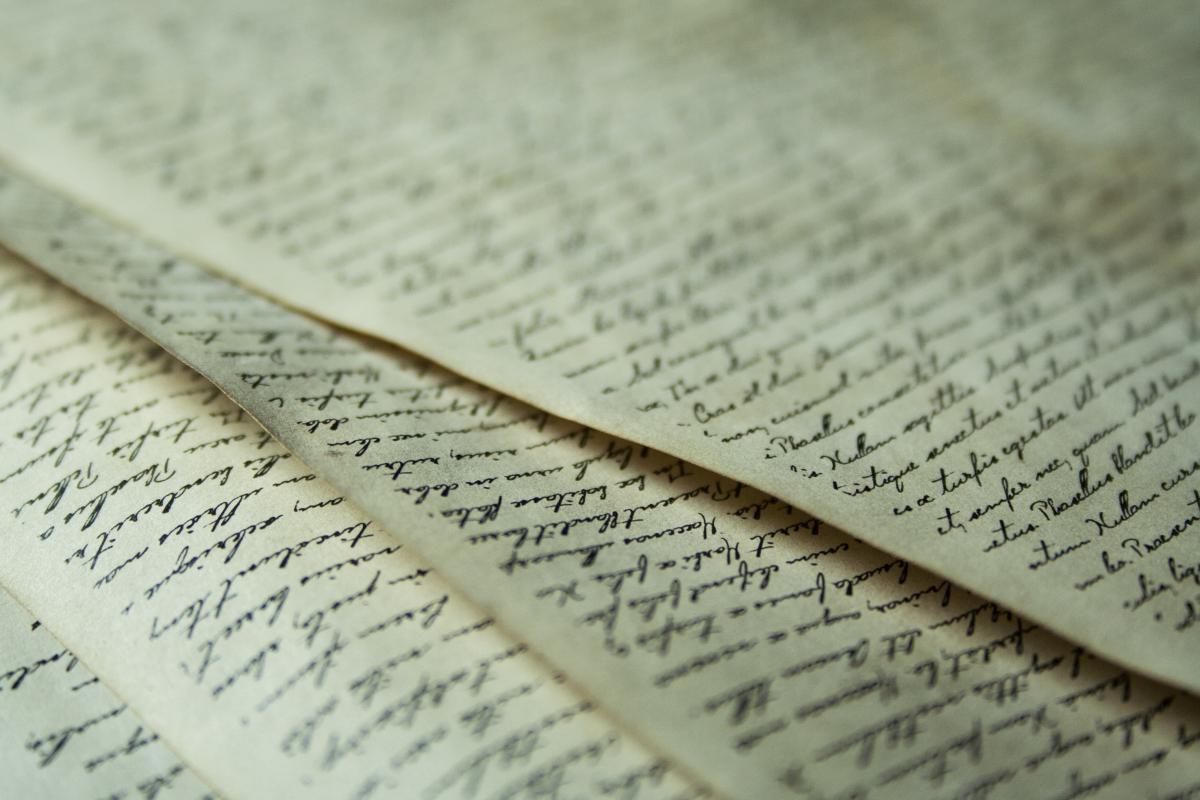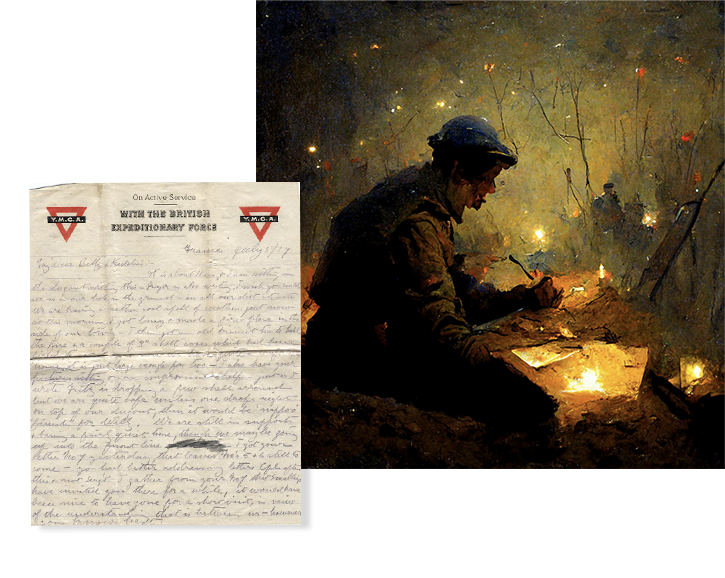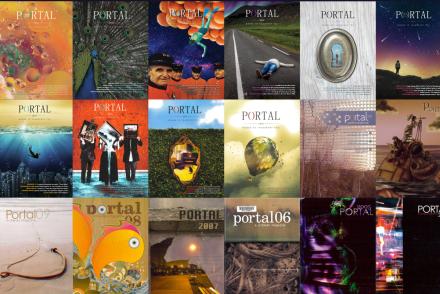
Two innovative ways people are using letters from the Canadian Letters and Images Project
Remembrance Day is a time to pause for a moment to honour and remember the men and women who have served and continue to serve Canada during times of war, conflict and peace. But for today’s youth, memories of those sacrifices made long ago, especially during the First and Second World Wars, are fading as time goes on.
Vancouver Island University’s (VIU’s) Canadian Letters and Images Project (CLIP) aims to preserve these memories for generations to come. The project puts a human face on the wartime experience through the letters of “ordinary” Canadians and is an online archive of the Canadian war experience, as told through the letters and images of Canadians themselves.
This year, two innovative new projects are making use of the rich materials made available through CLIP to help Canadians remember and honour the sacrifices armed forces members made. The projects make use of interactive maps and AI to help bring the letters to life in a modern, technologically savvy way.
“These initiatives are an excellent means of bringing the Remembrance story to a younger generation who can perhaps relate more easily to the technology of AI or interactive maps better than simply the words of the letters alone,” says Dr. Stephen Davies, Director of the Canadian Letters and Images Project. “It’s exciting to see this innovative technology being used to tell the veterans' stories in new ways. The use of the letters in this manner very poignantly connects the past veterans with the present day.”
Read on to learn more about these projects.
Remastered Memories
True Patriot Love has taken letters soldiers wrote from the front lines, several of which were sourced from CLIP, and had them “read” by an image-generating algorithm, which has turned each of their words into a work of art. Each piece paints a fuller picture of a Canadian soldiers’ service and sacrifices, helping to preserve their memories for generations to come.
 For example, in a letter to his wife and children, William Mayse writes: “As I write Fritz is dropping a few shell around but we are quite safe unless one drops right on top of our dugout. The horror of it all can never be described, its worse than hell.”
For example, in a letter to his wife and children, William Mayse writes: “As I write Fritz is dropping a few shell around but we are quite safe unless one drops right on top of our dugout. The horror of it all can never be described, its worse than hell.”
Readers of the Remastered Memories project can then view the AI-generated image of the scene William Mayse describes in his letter.
“I think that someone such as Will Mayse, who wrote that very moving letter in 1917, would be pleased and proud to see his words rendered into art to support today’s veterans,” says Davies.
Canada’s foundation for the military community, True Patriot Love works to support military members, veterans and their families at every stage of their journey.
Letters Home
HomeEquity Bank is marking Remembrance Day by sending authentic letters sourced from the Canadian Letters & Images Project to their original destinations across Canada. These letters, from soldiers who fought in the First and Second World Wars, provide homeowners with an honest and thought-provoking reminder of their sacrifice when delivered to their doorsteps.
“Each year, we find creative ways to remind all Canadians about the sacrifices and countless contributions our brave veterans made for our country, and this year’s campaign really hits home – literally,” said Steven Ranson, President and CEO of HomeEquity Bank, in a press release. “Technology is allowing us to share these wartime letters online and ensure their stories live on in a way all generations of Canadians can interact with. We hope Canadians engage with Letters Home, and reflect on the sacrifices these soldiers have made, so that it may deepen their understanding of what serving your country means.”
The campaign includes a QR code to help drive digital poppy sales at mypoppy.ca. The organization has also created an interactive map at Letters-Home.ca to help Canadians of all ages feel connected to veterans’ stories. Canadians can enter their home addresses to see if letters were sent to their houses from soldiers writing home in another era. Nearby letters can be viewed on the interactive map platform.




